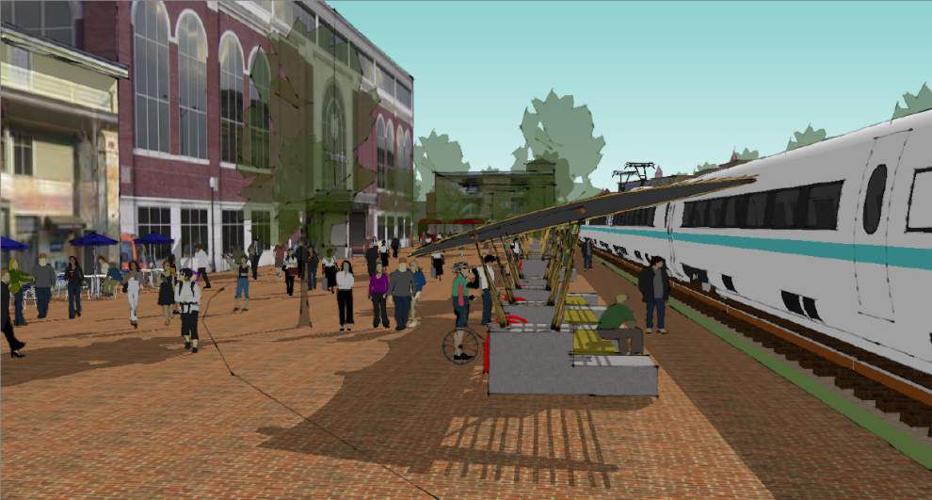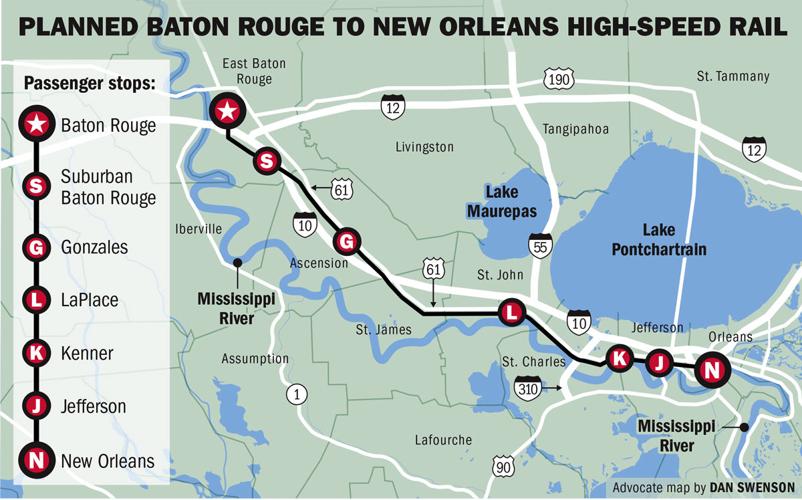Planners in charge of the long-discussed Baton Rouge-New Orleans passenger rail service will unveil conceptual designs for the two rail stations in the Capital City Tuesday evening at a public meeting designed to gain input and provide and update on the project.
The East Baton Rouge Redevelopment Authority and HNTB, the consulting firm hired to explore the rail service project, will host the meeting at 6 p.m. in the Shiloh Missionary Baptist Church at 185 Eddie Robinson Sr. Drive. The organizations in recent months have conducted technical analysis, met with political and community leaders in the proposed areas and designed the preliminary concepts for two “state-of-the-art, multi-modal” rail stations.
A team led by HNTB has been selected to plan and design two railroad stations that would be part of a passenger service linking Baton Rouge an…
The plans call for one station in Mid City, near the Electric Depot development at the former Entergy site on Government Street, and another suburban station in the Baton Rouge Health District.
Bryan Jones, project manager with HNTB, said the team hopes to get feedback from the public on the concept designs and retool the plans for a final master plan to be delivered in late August or early September.
Jones said the rail stations could also include retail, residential or office developments, as well as sponsorships, to make them into economic development engines.
"The most successful projects of this type around the country are not transit centers in and of themselves but are part of a more attractive development that includes a lot of commercial and pedestrian activity," Jones said.
The Mid City station would serve as the terminus for the corridor service and is being pitched as a catalyst for revitalizing the area.
The RDA budgeted $450,000 for HNTB’s work when it selected the Kansas City-based firm to spearhead the project last fall. The Metro Council and Southern Rail Commission each gave $250,000 to pay for the rail stations.
Leaders have discussed the rail service for years, but funding has remained a looming question. Part of the request of HNTB when hired by the RDA was to identify ways to pay for the building and operation of the terminals, including ideas for public-private partnerships. Jones said the team has begun evaluating several pots of money.
The proposed Baton Rouge to New Orleans passenger rail service took another step forward Thursday as the East Baton Rouge Redevelopment Author…
Previous estimates have put the overall cost of the rail service, including improvements to bridges and crossings, at slightly more than $260 million.
Other rail stations proposed would be at Louis Armstrong International Airport, as well as locations in Gonzales and LaPlace.








